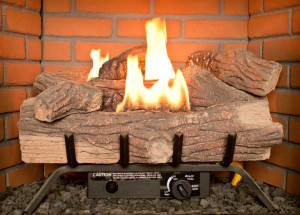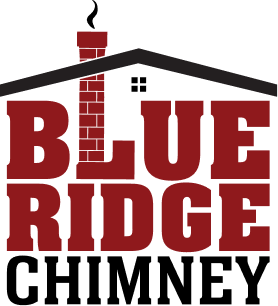If you have an older traditional fireplace, you may have noticed that it does not heat your home as efficiently as you would like. One option you have to is to install a new gas-fueled fireplace insert into your old fireplace. Convenient and easy to use, a gas fireplace can save you money on your heating bills this winter. However, you should be aware that, even with a newer heating appliance, your masonry chimney will still need an annual inspection for safety and efficiency reasons. According to the Chimney Institute of America (CSIA), your gas appliance produces gases that can eat away at the inside of your chimney without any visible signs. This corrosion can endanger your family and your home by compromising the safety of the structure of your chimney. Blue Ridge Chimney Services would like to tell you more about how switching to a gas-fueled heating appliance can lead to spalling damage of the flue.
How can switching to a gas-fueled appliance damage the inside of my chimney?
The main problem that occurs when you upgrade your traditional fireplace to a gas-operated appliance is the flue will be too large for the new appliance. This size issue coupled with the fact that there is less heat in the venting system with higher-efficiency appliances leads to draft issues. Water vapor is always produced during the combustion process, and if the flue is too large for the heating appliance, the water vapor will not exit the chimney quickly due to lack of heat. If there is not enough heat to sufficiently carry the water vapor out of the flue, this moisture will condense inside the flue and form acids. This acidic condensation is what can damage the inside of the flue by causing it to crack and break apart. Eventually, this corrosion caused by acidic condensation could cause your chimney liner to crumble. Debris from the crumbled liner can block the exit of your chimney and force toxic gases from combustion like carbon monoxide back into your house. This poisonous gas can also leak into your home through the cracks and gaps in the liner. Even more frightening, draft issues caused by a too-large flue can lead to incomplete combustion because not enough oxygen can be drawn into the chimney. Incomplete combustion is responsible for the production of carbon monoxide in the first place, so you are at an even greater risk for carbon monoxide poisoning.
How can Blue Ridge Chimney Services solve this problem?
Our CSIA-certified chimney technicians know that gas-fueled heating appliances must meet specific venting requirements. Before we install a new gas fireplace insert, we will evaluate your chimney to ensure the appliance will function correctly and safely. If there is an issue with the flue being too large for the appliance, we can install a new stainless steel chimney liner that will be properly sized to the appliance so it can work effectively and without worry of corrosion. We know which chimney liners work best with gas-fueled heating appliances and will guarantee that your chimney is sufficiently protected by the right type of liner.
Considering upgrading your traditional fireplace to a gas-operated heating appliance? Contact us at Blue Ridge Chimney Services to learn more about how a new gas fireplace insert can save you money on your heating bills this winter.
